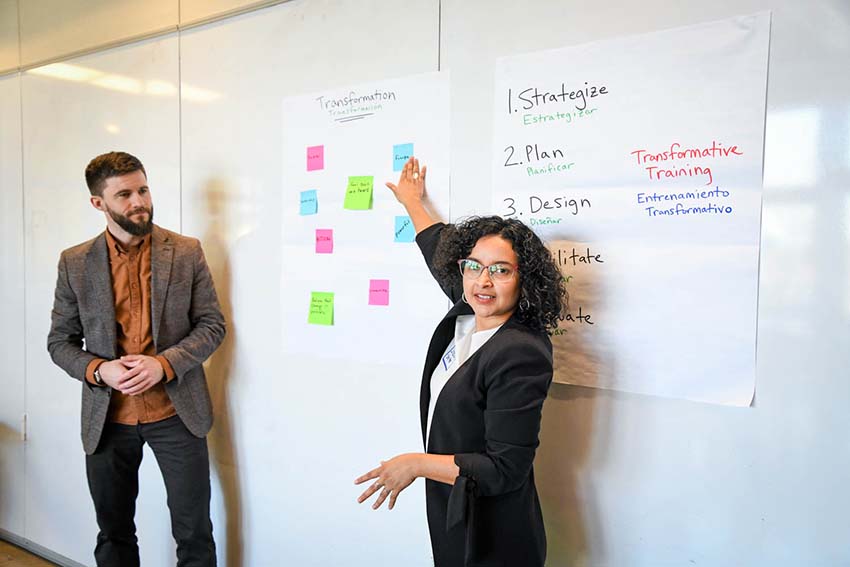Last week we held our third session of our online cohort program, The Transformative Trainer, where we help participants launch their own training for social change in 8 weeks.
Dates for our next cohort coming soon–stay tuned!
The focus of the session was design–how to craft powerful activities that help participants take action towards their collective goals.
A common challenge we find is not a lack of familiarity with participatory activities–these trainers have used or experienced many activities in the course of their work. Instead, it is knowing which activities to use for the specific topic they want to address.
To help trainers accomplish this, we shared a tool called The SEA Framework for activity design.

3 Principles for Activity Design
The SEA framework is based on years of experience, seeing activities that create lasting memories and seeing activities flop.
What we’ve found is that the most effective activities include all three of the following elements. Those that don’t work might have one or two but are missing the third.
SEA is an acronym, it stands for:
- Show Don’t Tell: This is what the trainer does to introduce new content.
- Engage Don’t Present: This is what the trainer does to invite participation, using an activity.
- Ask Don’t Explain: This is what the trainer does to encourage dialogue through questions.
Here are some experiences that illustrate what happens when one of those is missing.
If you recognize yourself in this–don’t fret! It may just be a sign that you are still learning. That’s the point, isn’t it?

When the Activities are Incomplete
Show + Engage + Ask
I remember attending an immigrant justice training where the facilitator shared about social movements through history.
They invited volunteers up in front of the room to hold placards with examples of immigrant movements and proceeded to read each example and explain their meaning to the group.
Here she engaged people’s bodies by inviting them up to the front of the room, and showed some new information, but neglected to ask the participants what meaning they drew from the information and how that might apply to their life and work.
Show + Engage + Ask
Once I was working with a group of young people in Ecuador who were starting a youth center.
When they convened a meeting at my request, I asked them what they would like to see at their youth center.
They brainstormed a list of ideas, most of which involved activities that would generate revenue (selling foods, hosting events, etc.) because I never introduced new information that might help them imagine new possibilities based on other youth-led models that I might have researched.
This engaged them in large group discussion and asked them questions, but failed to show alternative stories that might inspire an even wider, more creative vision.
Show + Engage + Ask
Another time I was facilitating a train the trainers for a community, labor, and faith coalition.
Near the end of the training, I invited them to name examples of how they could apply what they learned.
I stood in front of a timeline charting the next calendar year with a marker in hand.
One brave participant raised his hand and offered an idea and I asked where to put on the timeline.
“Wait, I just came up with this,” he said, “I don’t know if folks are ready to commit.”
Here I had a way to show the timeline and a question to ask, but no effective way to engage them in dialogue that would help them generate a more holistic plan for application.

The Whole SEA
Life is complex and our brains are full of information. That is undoubtedly true for every learner who enters your training.
For them to apply what they learn, the content must sink into the depths of this sea of information.
In order to do that, as a trainer, think of the SEA by incorporating a way to show the content instead of telling, engage through an activity instead of presenting, and ask them questions instead of explaining the answers.
That’s why we created this resource, to give you tons of ways to accomplish your goals as a trainer.
Together it contains 5,000 unique combinations that, applied effectively, can help your learners take action for change.
Click here to download and sign-up for our newsletter for even more free resources.
What do you think, is this a helpful framework? Let us know in the comments.





